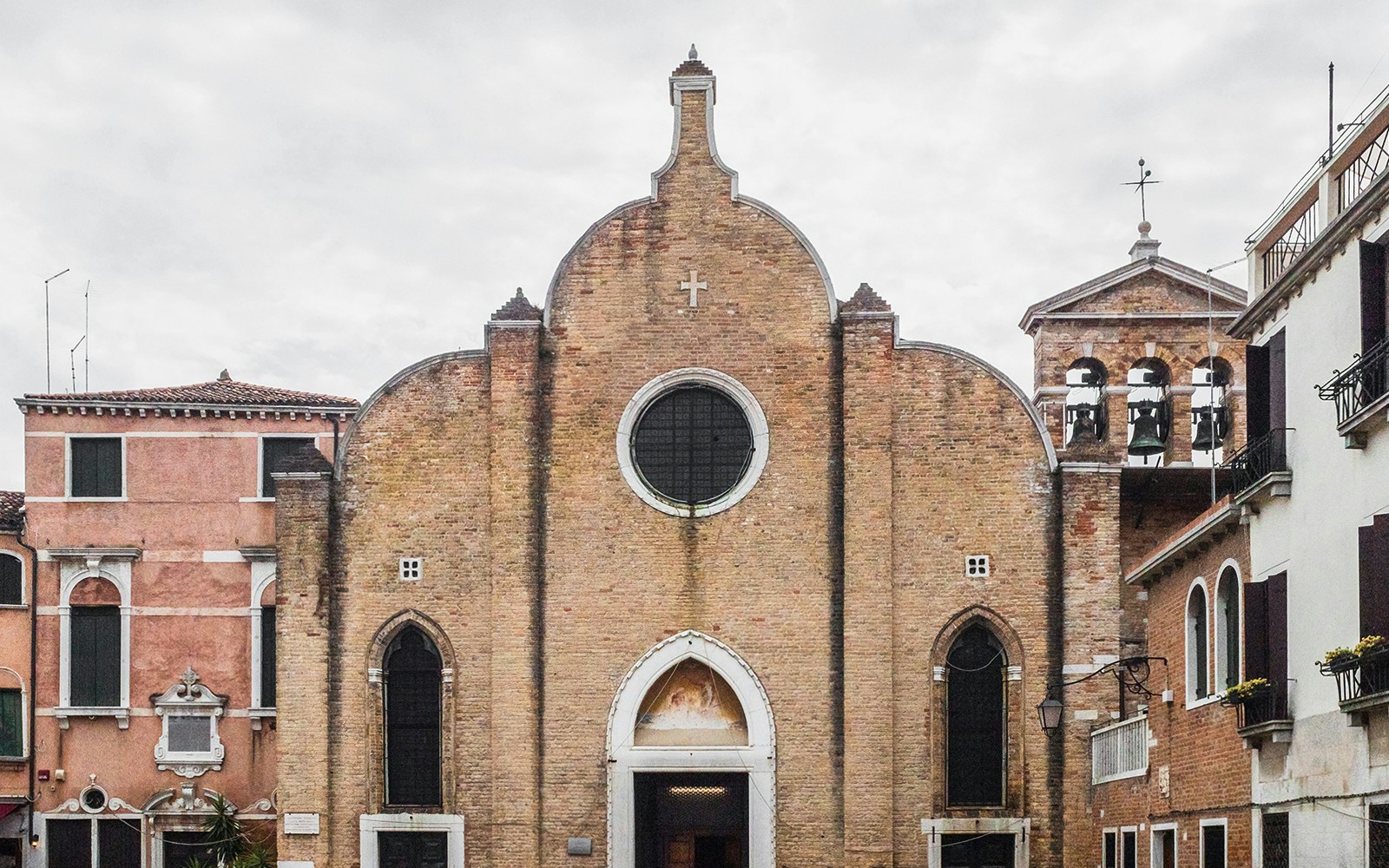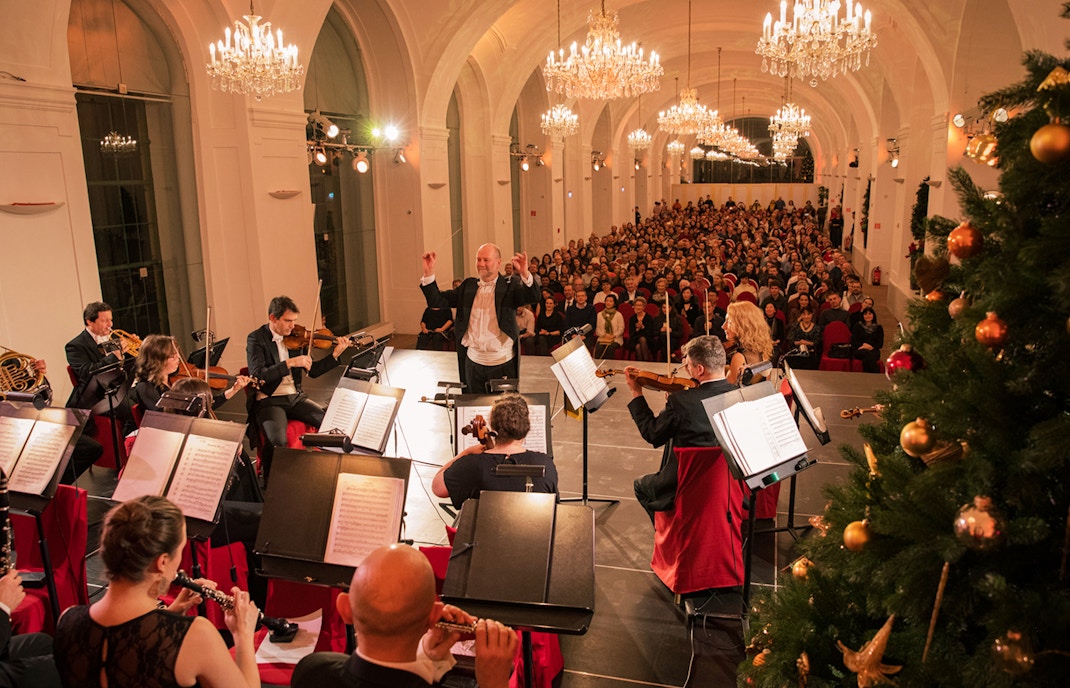
Discover the immortal creations of Vivaldi in Vienna
Vivaldi’s life and contributions

Early life in Venice
- Born on March 4, 1678, in Venice, Antonio Vivaldi grew up in a city alive with art, music, and culture.
- He was trained in music by his father, Giovanni Battista, a professional violinist.
- Due to fragile health, Vivaldi was ordained as a priest in 1703 but was soon nicknamed 'Il Prete Rosso' or 'The Red Priest' for his distinctive red hair.

Composer, teacher, and priest
- Vivaldi balanced his roles as a composer, teacher, and ordained priest with remarkable success.
- He worked for the Ospedale della Pietà, an orphanage for girls in Venice, where he composed and taught music, creating an environment that nurtured musical talent.
- His work at the Pietà earned him widespread admiration and allowed him to experiment with bold, innovative musical techniques.

Key contributions to Baroque Music
- Vivaldi composed over 500 concertos, many of which revolutionized the form by highlighting the soloist’s role and emotional expression. His most famous work, The Four Seasons, remains an iconic masterpiece, vividly capturing nature’s changing moods.
- He developed the ritornello form in concertos and influenced the development of operas and sacred choral music.
- Vivaldi’s music was groundbreaking in its energy, rhythm, and ability to convey imagery, making him a leading figure of the Baroque era.
Vivaldi’s greatest works that shaped Baroque music

The Four Season
The Four Seasons isn’t just music, it’s a journey through nature brought to life. Vivaldi’s violin concertos paint each season vividly, from the cheerful chirping of spring birds to the biting cold of winter. With its blend of technical mastery and storytelling, this piece captures emotions and scenes so vividly it’s no surprise it became a cornerstone of programmatic music.
Four Seasons concert at St. Charles Church Vienna
Operas
Vivaldi’s operas, like Orlando Furioso and La Griselda, highlight his flair for drama and emotion. From sweeping, expressive melodies to intricate orchestration, Vivaldi knew how to make characters’ struggles and passions resonate. Though his operas were underappreciated for centuries, their rediscovery has brought them back into the spotlight, proving just how much depth and theatricality Vivaldi brought to Baroque opera.

Other works
Vivaldi’s talent extended beyond concertos and operas to sacred music, with works like the Gloria radiating both grandeur and joy. His instrumental pieces for flute, cello, and mandolin highlight his inventive genius, showcasing each instrument’s unique voice. With an unparalleled ability to push musical boundaries, Vivaldi’s explorations of new ideas and sounds continue to resonate today.
Lesser-known facts about Vivaldi

- Vivaldi earned the nickname ‘Il Prete Rosso’ (The Red Priest) due to his striking red hair, a trait he inherited from his father. Despite his ordination, he focused more on music than religious duties.
- Vivaldi wrote over 500 concertos, including works for violin, cello, flute, and even unusual instruments like the mandolin. His ability to compose quickly earned him a reputation for remarkable productivity and creativity.
- Many of Vivaldi’s operas, such as Orlando Furioso and La Griselda, were forgotten after his death. They were only rediscovered in the 20th century, highlighting his genius as an opera composer.
- With The Four Seasons, Vivaldi pioneered programmatic music—compositions that tell a story or paint a scene. He included descriptive sonnets to guide listeners through nature’s changing moods, a groundbreaking idea for his time.
- J.S. Bach admired Vivaldi’s work so much that he transcribed several of his concertos for organ and harpsichord, showcasing how Vivaldi’s music shaped the evolution of Baroque composition.
Why Vienna is the ideal place to experience Vivaldi’s music?
Vienna's rich musical heritage and historic venues make it an ideal city to experience Vivaldi's compositions. The Musikverein, renowned for its acoustics, and the Baroque Karlskirche (St. Charles Church) offer immersive settings for Baroque music.

Karlskirche, completed in 1737, is a Baroque masterpiece with opulent interiors and excellent acoustics, making it a perfect venue for Vivaldi's works. Notably, Vivaldi was buried nearby in 1741, adding historical depth to performances here. Regular concerts feature The Four Seasons on period instruments, lasting about 70 minutes and starting at 8:15 pm.
Attending a concert at Karlskirche offers not only exquisite music but also a chance to admire its stunning architecture and connection to Vivaldi's legacy. During the holiday season, special Christmas concerts add a festive touch, making it a must-visit for classical music enthusiasts. Its central location also makes it easy to enjoy dining before or after the performance.
Vivaldi concerts at the KarlskircheExploring Vivaldi’s Venice





More classical concerts to explore

Mozart concerts
Experience the timeless compositions of Mozart at the Schönbrunn Palace’s Orangery, an elegant venue steeped in history. Accompanied by the Vienna Mozart Orchestra, performances showcase the maestro’s masterpieces in a majestic setting, offering visitors an authentic 18th-century musical experience complemented by the beauty of this UNESCO World Heritage site.
Mozart's timeless legacy
Strauss concerts
Johann Strauss, the ‘King of Waltz,’ shares the spotlight with Mozart in stunning venues like the Kursalon and Schönbrunn Palace. Strauss concerts are celebrated for lively waltzes, polkas, and operettas performed by talented orchestras. These concerts embody Vienna’s rich musical tradition, making them a must-see for lovers of classical music.
Richard Strauss' life and legacyFrequently asked questions on Vivaldi and Baroque concerts
Vienna's deep-rooted classical music heritage, combined with the timeless appeal of Vivaldi's The Four Seasons, makes these concerts particularly popular. They often take place in historic venues, offering both musical and cultural immersion.
Top venues include Karlskirche (St. Charles Church), known for its stunning acoustics and Baroque architecture, and other historic sites like Palais Schönborn and Musikverein’s Brahms Hall.
Tickets can be conveniently booked online via platforms such as Vienna Concert Tickets. Online booking allows you to skip queues and choose from various options.
The Four Seasons is celebrated for its vivid musical storytelling, where each movement captures the essence of spring, summer, autumn, and winter. Its emotional depth and innovative use of instruments have cemented it as a Baroque masterpiece.
Vivaldi concerts are held year-round, but attending during spring or winter adds seasonal charm. Evening performances, especially at Karlskirche, enhance the ambiance with candlelit settings.
Most Vivaldi concerts last approximately 1.5 to 2 hours, including a short intermission.
While formal attire is not mandatory, smart-casual or semi-formal clothing is recommended to match the elegant atmosphere of Baroque-style performances.
Yes, many performances use period instruments to recreate Vivaldi's compositions as they were originally intended.
Major venues like Karlskirche and Musikverein offer wheelchair access and assistance. Visitors are advised to check specific details when booking tickets.
Photography and video recording are typically not allowed during performances to preserve the immersive experience.
Arrive early to appreciate the venue’s architecture, dress appropriately, and read about Vivaldi’s works beforehand for a deeper connection to the music. Booking seats closer to the stage enhances acoustics and the overall experience.